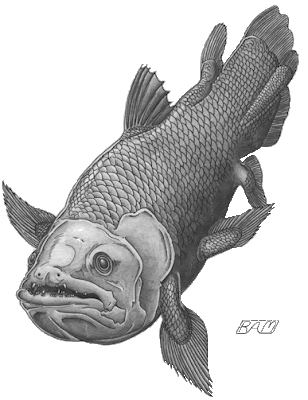 |
| Two lobe-fins from Devonian period and one from Triassic (up left) Image Devonian times |
Devonian bone fish include species with lobe-fins instead of bony fins. There are many different species classed together as Sarcopterygii (Gr. sarks and pteryx, flesh fin). In early models the fin is joined to the body with a single bone and the fins resemble more limbs than fins. These fish usually have two dorsal fins instead of the one other bone fish have.
(wikipedia)
 |
| Coelacanth Artist's view Image Biology of Sharks and Rays |
So it was quite a surprise when a live Coelacanth was caught by fishers in 1938 from Chalumne river in South Africa. Today it is known that such live fossils of Devonian fish are living near the coasts of Indian Ocean and Indonesia. Two subspecies have been identified, Latimeria chalumnae and Latimeria menadoensis.
(see more in wikipedia )
 |
| Coelacanth caught in 1974 Comoros islands, Mozambique Vienna Nature Museum, Austria wikimedia |
No comments:
Post a Comment